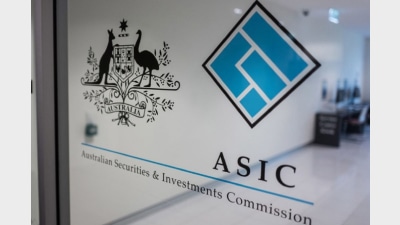In the search for diversity, funds embrace a direct approach
Property investments have traditionally been a staple for many fund portfolios. Listed property trusts in particular have garnered good returns, triggered by the strong performance of the Australian equities market. In the past, direct property has been less used, but according to Michael Wyrsch, senior consultant at Frontier Investment Consulting, this could be due to change.
“The greatest advantage that direct property has lies in its illiquidity,” he said. “It isn’t subject to equity market volatility as listed property so obviously is.”
Wyrsch said a fund’s investment in unlisted property gave its portfolio exposure to pure property, whether that was domestic or offshore. Listed property, on the other hand, would traditionally give an investment portfolio exposure to increased risk activities such as development.
Ken Marshmann, managing director of investment consulting firm JANA, also believes unlisted property has many advantages to offset its illiquidity.
“Direct property investments give funds comfort during periods of liquidity crisis,” he said. “Whereas listed property trusts simply don’t provide the same degree of evaluation support.
“Direct property provides greater investment protection when the more traditional investments are experiencing a downturn in returns. That is its primary advantage.”
Sandy Grant, chief executive officer of the building and construction industry fund CBus, stated that most funds looked to unlisted property for the diversification that it could provide.
“Funds often want to minimise the volatility in their investment returns and the stability of the pure property market provides this,” Grant said. “The property market bears no correlation to the stock market. The markets are usually counter cyclical.”
Looking at listed property, however, Marshmann said that in recent times it had clearly enjoyed a share of the investment limelight attracted by domestic equities.
“Over the past 10 years, listed property trusts have had increasing levels of gearing within their sub classes,” he said. “Anywhere ranging from 20 per cent to more than 40 per cent. It’s been a major feature of listed property and has meant that in low interest rate environments they’ve provided greater returns.
“However, if a change in the market was to occur, then there would be a double whammy on the other side.”
Grant feels that it isn’t surprising that more funds haven’t looked towards increasing their direct property allocations, despite many property sectors giving more than acceptable long-term returns.
“People have felt they can gain exposure to the property market through listed property trusts,” he said. “But the superannuation industry has changed a lot in the last few years. Where funds were previously significantly smaller, they are now growing and investment strategies are changing accordingly.”
Ian Silk, chief executive officer of the Australian Retirement Fund (ARF), points out that allocations to property, and direct property in particular, vary significantly between funds.
“ARF has had an investment allocation as high as 15 per cent for direct property,” he said. “And our current allocation would probably lie in the vicinity of 10 per cent. That is certainly a high percentage when compared with other funds, but it enables us to give our members the good returns that they are seeking.”
Unfortunately, the barrier for many funds interested in increasing their direct property allocations is as simple as availability of quality product.
“High quality investments in direct property are definitely becoming difficult to obtain,” Marshmann said. “The release of property from private hands to institutional hands has been slow and it hasn’t been until recently that the industry has started to see more of it.”
Marshmann said more property would be released for institutional investment as yields dropped and prices increased.
According to Grant, the rarity and difficulty in obtaining high quality direct property with consistently good returns is nothing new.
“A good property investment is hard to find and that has always been the case,” he said. “It has always been easy to buy second rate property and difficult to buy the best. However, that statement isn’t uniquely true of property.”
Wyrsch agrees with Grant and Marshmann’s assessment of the direct property market.
“Certainly, they are becoming rarer,” he said. “Retail property in particular is more and more being handed over through related party transactions, which makes things difficult for funds looking to get into the market.”
With barriers of availability making property investment in the traditional sub sectors of office, industrial and infrastructure increasingly difficult, it is little wonder that many fund executives are investigating other property forms.
Marshmann believes it is simply a case of the investment class as a whole engendering greater interest as the returns associated with property have increased.
“As direct property has continued to enjoy good returns, there has been more interest in the institutionalisation of other property forms,” he said.
Marshmann stated that a broad spectrum of property sectors had received fund and investor interest ranging from student housing to agricultural to urban housing developments.
“There is a huge amount of farmland in Australia that is, in many cases, tying up our farmers’ capital,” Marshmann said. “Institutional investment in this area can free that capital and achieve good returns to boot.
“It’s an area that should see significant development in coming years.”
Wyrsch has seen a trend up the risk spectrum from funds looking for alternative means of achieving solid property returns.
“Historically, retail property has been the most defensive,” he said. “It has been the property class that has enjoyed the best standing since the early 90s and this has been reflected in its returns.
“But value added property and development is becoming increasingly popular for funds not averse to the extra risk involved.”
Fund executives, however, seem to be more cautious in their approach to non-traditional property investments.
“Funds should look across the broad spectrum,” Grant said. “CBus is looking at all options. We aren’t limiting ourselves according to property sector or geography, but the reality is that these investments are pretty fully priced in many areas.”
Silk also admits that there may be opportunities in other property forms.
“ARF is looking at a range of non traditional sub sectors including residential,” he said. “But we are just looking. There may be opportunities there but we are not yet convinced.”
However, investment in non-traditional property sectors isn’t the only option available to funds looking for good returns from this asset class.
According to Wyrsch, investing in offshore property offers a fund further diversification for its portfolio and is becoming increasingly popular.
“There’s currently a lot happening in the overseas markets, particularly in Japan, Europe and Singapore,” he said. “But it isn’t without risk. There are many issues to combat and taxation and currency are just the beginning. The opportunities are there, but you have to be sure it is worth it.”
Marshmann said that much of the challenge of investing in property overseas lies in a fund finding exactly what it is looking for.
“The challenge lies in first finding good agents overseas and then finding the right properties to capitalise on the opportunities in the market,” he said. “The task is difficult enough in our own backyard, let alone far from home.
“Add to that the complexities of taxation and currency and the realisation is that the investment needs to be justified,” continued Marshmann. “Having said that, I think that the industry may be on the threshold of major change in this direction.”
Grant stated that diversification was the major draw card for CBus’ offshore investment.
“Our overseas property allocations are a diversification strategy and not a returns seeking strategy,” he said. “And we are always mindful of both sovereign and currency risk.”
Grant also said funds have to be aware that many overseas funds and investors are coming to Australia for precisely the same reasons.
But for those funds having trouble gaining exposure to direct property in one form or another, Silk points out that there are other options.
“ARF has traditionally invested in unlisted property through unlisted managers, such as the Industry Superannuation Property Trust (ISPT),” he said. “Our experience has been of strong and stable returns which have not necessarily had any correlation with the stock market.”
Wyrsch admits that ISPT has always been well supported by industry funds.
“The advantage of ISPT is that it’s not for profit,” he said. “It has low fees that are often half that charged by other property funds and its returns are hard to argue with.”
Wyrsch said that over recent years, a number of issues had arisen in terms of conflicts of interest in institutionally owned vehicles and that, as a consequence, ISPT may slowly see competition in the marketplace.
“We’re already seeing more boutique property funds and I think that the trend is likely to continue,” he said.
Grant said that CBus had also had positive experiences with ISPT.
Recommended for you
A “concerning” number of Aussies don’t know what they pay in super fees, a young super fund has said.
The corporate regulator has shared some ‘disappointing’ findings upon reviewing the public communications of more than 20 trustees with regards to death benefits.
According to the industry body, funds should have an obligation to transfer members in failing products to better-performing products in a timely way.
The $9 billion fund is backing agriculture investor GO.FARM, with its capital already directed towards enhancing two key assets.












Add new comment